Impact Craters
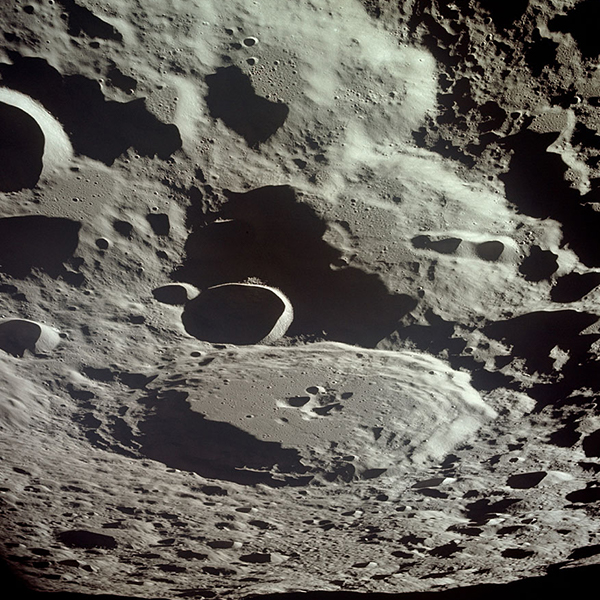
Daedulus crater on the Moon, photographed by the Apollo 11 crew (NASA)

Daedulus crater on the Moon, photographed by the Apollo 11 crew (NASA)
How does this align with my curriculum?
Learn about how craters are formed and about some of Canada's impact craters.
Zipping around our Solar System are objects smaller than planets and stars. These small solar system bodies (SSSBs) include asteroids and comets.
Misconception Alert!
Comets are NOT the same as asteroids. A comet is a chunk of ice mixed with rock that comes from the outer part of our solar system. An asteroid is a piece of rock or metal in orbit around the Sun generally between Mars and Jupiter.
Sometimes, one of these SSSBs smashes into a larger planetary body, such as a planet or moon. We call the collisions impact events.
What is an impact crater?
When an SSSB hits a planet, moon or other object, it is a lot like the explosion of a huge bomb. Large amounts of surface material can be blown away, leaving behind a large hole. We call these holes, or depressions, impact craters.
Many planetary bodies have many impact craters. They can be found on Mercury, on our Moon, and on Jupiter’s moons Callisto and Ganymede.
Did you know?
The largest asteroid in our Solar System is called Ceres. It is about one-quarter of the size of Earth’s moon.
Impact craters tend to be circular in shape. This does not mean the object that created the crater was circular. Instead, the circular shape happens because there is typically a massive explosion upon impact. This explosion causes material to fly out in all directions. This material is called ejecta.
Crater Formation Demo (2013) Kirby Runyon (0:11 min.).
Sometimes, an elongated (oval) crater can form. This happens if an object strikes the surface at a very low angle.
What are the different types of impact craters?
Simple craters are small, bowl-shaped craters with smooth walls. Complex craters are larger craters. They have features such as central peaks and stepped sides. The Moon’s Copernicus Crater is a complex crater. Simple and complex craters can range in diameter. Some are a few dozen metres wide. Others are up to 300 km wide!
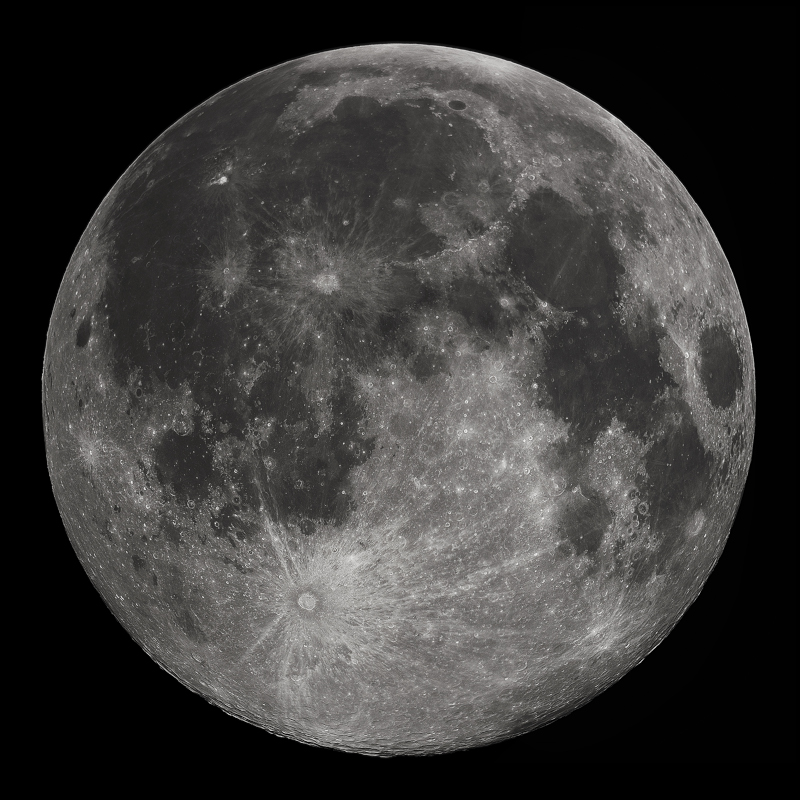
Image - Text Vrsion
Shown is a detailed colour photograph of Earth's full moon in space.
The Moon takes up the whole width and length of the image. The corners are black space. The top and bottom of the Moon are pale grey with a rough texture. At the top, lots of tiny craters are visible on the surface. The middle is marked by a handful of large, roughly round shapes in dark grey and black.
At the bottom left is a small white circle outlined in pale grey. Many thin, bright, white lines radiate out from here in all directions. The longest stretches almost up to the top of the Moon.
What factors determine the size and shape of a crater?
The size and shape of a crater depends on several factors. These include:
- the mass of the impacting object;
- the density of the impacting object;
- the velocity of the impacting object; and
- the geology (type of rock) of the surface the object strikes.
The greater the mass and velocity of the object, the larger the diameter of the crater will be.
On the Moon and other planets, craters look very much like how they looked when they were formed. But on Earth, craters tend to get worn away because of weathering and erosion. They also get destroyed through plate tectonics and volcanic activity. The processes on Earth’s surface can eventually erase impact craters. But as of 2022 190 terrestrial impact craters have been identified on Earth.
Where can you find impact craters in Canada?
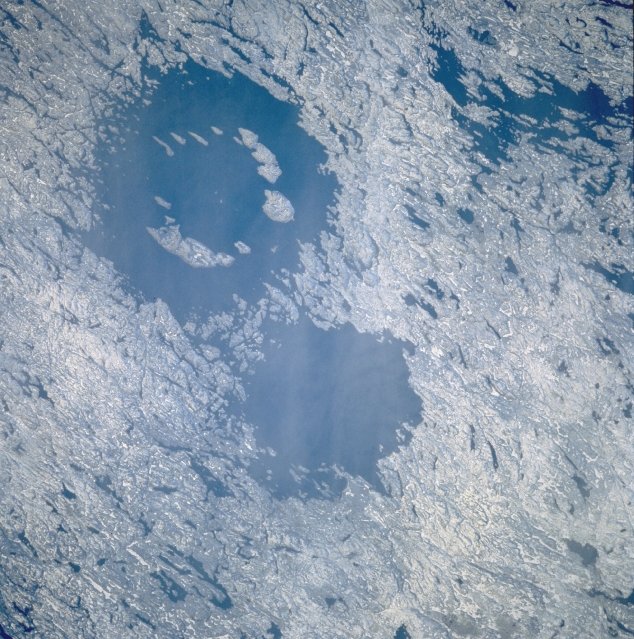
Image - Text Version
Shown is a colour, aerial photograph of two round lakes in a grey, barren landscape.
The landscape is pale grey mottled with tiny blue lakes and ponds. In the middle are two round lakes with rough edges. The top, larger one has an inner ring of pale grey islands.
Scientists think the impacts that caused these craters happened about 290 million years ago. Scientists used to think that the lakes were created by a double impact. A double impact is two impacts happening at the same time. Now, scientists now think the craters were formed about 4 million years apart!
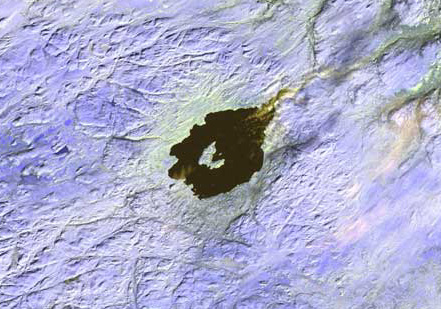
Image - Text Version
Shown is a colour, aerial photograph of round lake in a barren landscape.
In the centre of the image, the lake is dark brown, almost black. There is a C-shaped island just below and to the left of the centre. The water is a at the bottom of a deep, round valley with pale green sloping walls. On the top right, the water extends into a pointed shape that becomes what looks like a long, jagged canyon.
The landscape around is pale purple and criss-crossed with rough lines. Several thick, jagged green lines, that might be canyons, reach in from the top right corner.
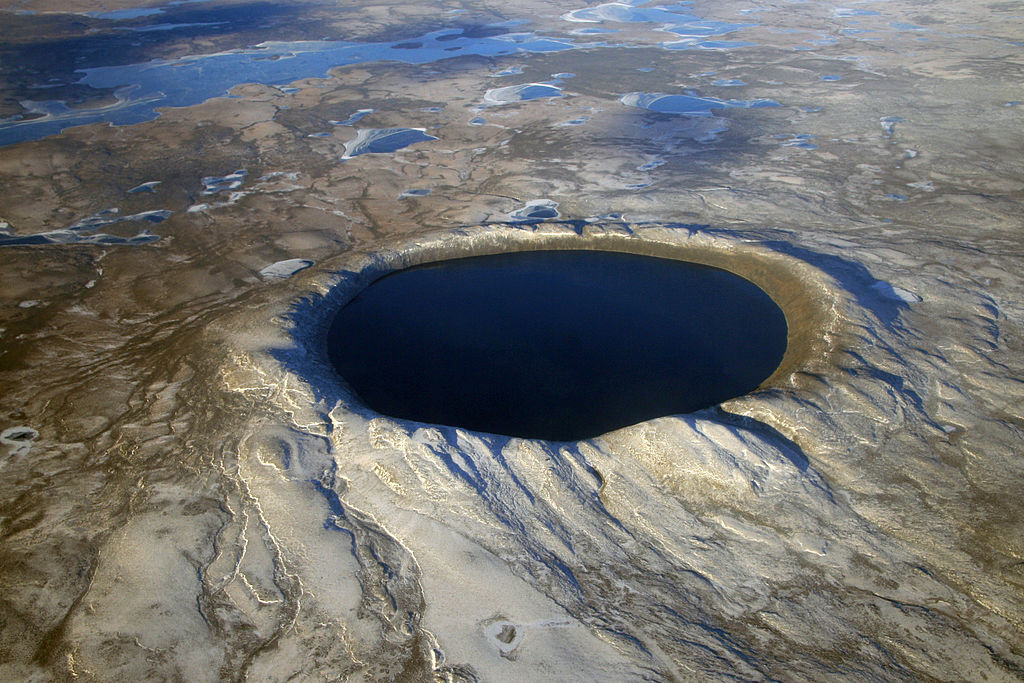
Image - Text Version
Shown is a colour, aerial photograph of a round lake with raised edges, in a barren landscape.
The lake is almost perfectly round and dark blue. The land is raised up around the edge to form a visible rim of pale beige rock. The inner walls learning down to the water are smooth and darker beige.
The land around is mostly flat and barren. It is pale beige rock mottled with darker beige textures. The background is dotted with small, pale blue lakes and ponds.
Did you know?
The largest impact crater in Canada is the Sudbury Basin in Ontario. It is about 62 km long and 30 km wide.
Learn More
What Happens When a Meteorite Strikes Earth? (2015)
This video (6:09 min.) explains the science behind meteorite impacts on Earth and details some of the scientific theories surrounding asteroids
Lunar Orbiter: Impact Basin Geology
This page includes images of some of the Moon’s impact basins and discusses their features along with the general geology of the Moon’s surface
Massive impact crater from a kilometre-wide iron meteorite discovered in Greenland (2018)
This news story is about the first impact crater found under a glacier. It discusses the impact that it may have had on Earth’s environment and climate
This is the blog of an amature crater explorer in Canada. It acts as a database including impact crater location, history, geology, and any scientific studies that have been conducted in relation to them.
References
Gianopoulos, A. (2008, March 10). Crater crazy. Astronomy.
Lunar and Planetary Institute. (n.d.). Shaping the planets: Impact cratering.
O'Dale, C. (2017). Pingualuit impact crater. Crater Explorer.
O'Dale, C. (2017). Mistastin impact crater. Crater Explorer.
Planetary and Space Science Centre. (n.d.). Earth impact database. University of New Brunswick.
Wambugu, D. M. (2018, December 19). What is an impact event? WorldAtlas.